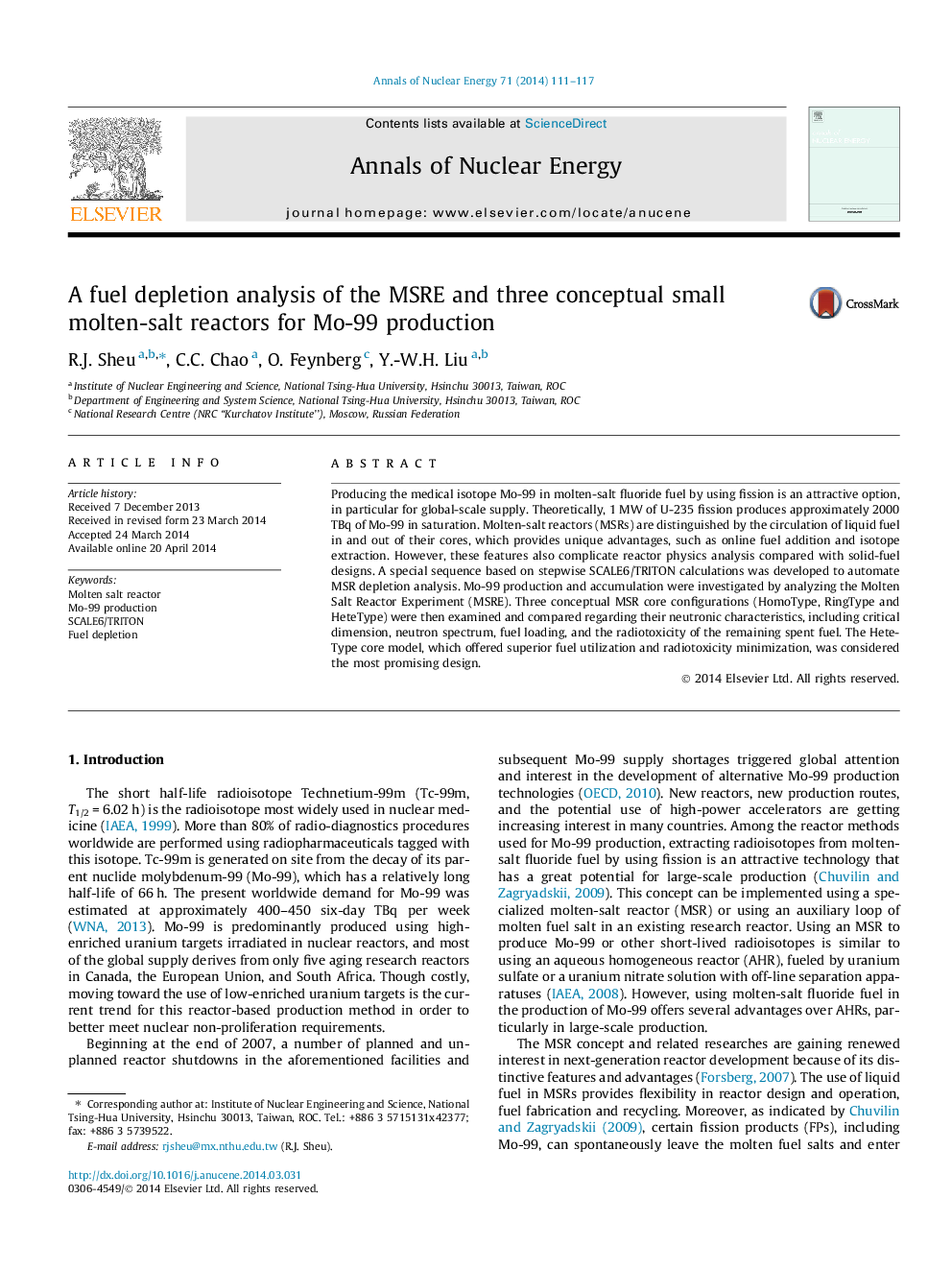| کد مقاله | کد نشریه | سال انتشار | مقاله انگلیسی | نسخه تمام متن |
|---|---|---|---|---|
| 1728260 | 1521127 | 2014 | 7 صفحه PDF | دانلود رایگان |

• Mo-99 production and accumulation were investigated by analyzing the MSRE.
• Three conceptual small MSR core configurations were examined and compared.
• HeteType is the most promising design in fuel utilization and radiotoxicity consideration.
Producing the medical isotope Mo-99 in molten-salt fluoride fuel by using fission is an attractive option, in particular for global-scale supply. Theoretically, 1 MW of U-235 fission produces approximately 2000 TBq of Mo-99 in saturation. Molten-salt reactors (MSRs) are distinguished by the circulation of liquid fuel in and out of their cores, which provides unique advantages, such as online fuel addition and isotope extraction. However, these features also complicate reactor physics analysis compared with solid-fuel designs. A special sequence based on stepwise SCALE6/TRITON calculations was developed to automate MSR depletion analysis. Mo-99 production and accumulation were investigated by analyzing the Molten Salt Reactor Experiment (MSRE). Three conceptual MSR core configurations (HomoType, RingType and HeteType) were then examined and compared regarding their neutronic characteristics, including critical dimension, neutron spectrum, fuel loading, and the radiotoxicity of the remaining spent fuel. The HeteType core model, which offered superior fuel utilization and radiotoxicity minimization, was considered the most promising design.
Journal: Annals of Nuclear Energy - Volume 71, September 2014, Pages 111–117